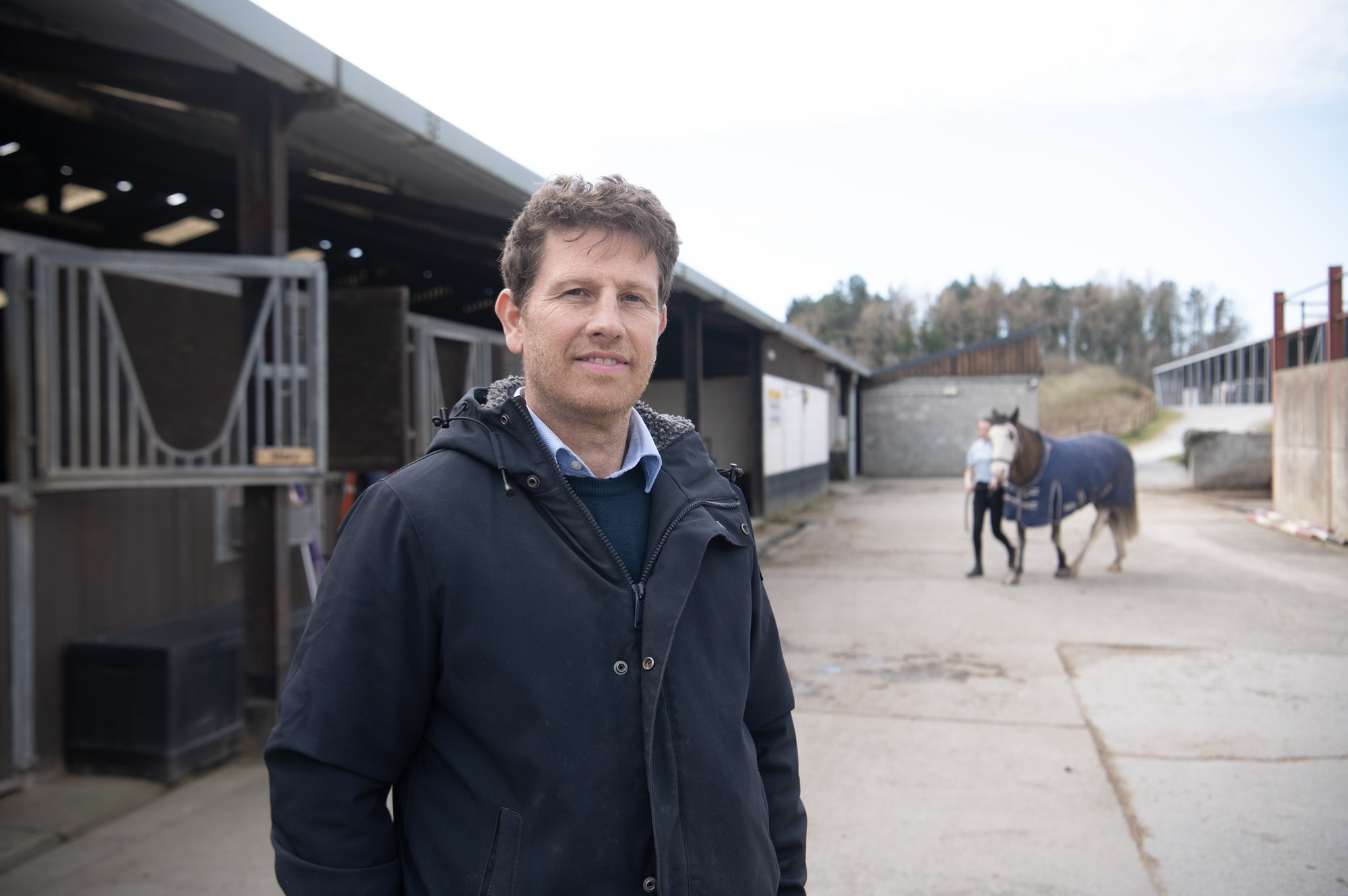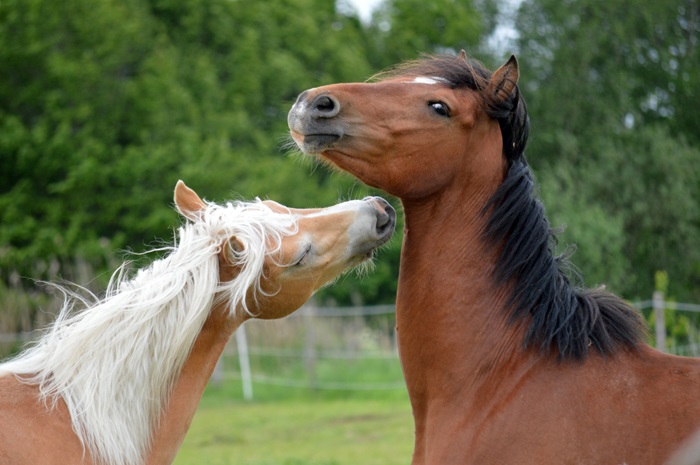Horses’ faces speak volumes - new study maps their rich facial language

Dr Sebastian McBride. Photo by Jay Williams
05 June 2025
Horses possess a far more expressive and nuanced facial “language” than previously understood, new research has revealed.
The study suggests that horses’ rich array of facial movements and behaviour may hold the key to better understanding their emotions, social lives, and wellbeing.
The research team, which includes an animal behaviour expert from Aberystwyth University, has created the first comprehensive ethogram - a catalogue of facial behaviours - based on real-life social interactions among domestic horses.
The study systematically documented over 800 combinations of facial movements, offering an unprecedented look at how horses use their faces to communicate in different social contexts.
Dr Sebastian McBride from the Department of Life Sciences at Aberystwyth University said:
“Our research found that horses use a wide range of facial movements, which vary depending on the social context.
“What’s particularly fascinating is that some of these facial behaviours, especially during play, mirror those seen in species like chimpanzees and dogs, supporting the hypothesis that these facial behaviours may be deep rooted in mammalian biology. It’s a fascinating insight into how evolution has shaped communication across species.”
The research team observed horses during affiliative (friendly), agonistic (conflict), attentional, and playful interactions. They then used advanced facial coding techniques to break down facial behaviour into individual muscle movements.
These observations were then analysed to identify which facial movements were most strongly associated with each type of interaction.
Dr Leanne Proops, Associate Professor in Animal Behaviour and Welfare at the Centre for Comparative and Evolutionary Psychology at the University of Portsmouth said:
“This is the first time we’ve been able to systematically document how horses combine facial movements into meaningful expressions. It opens up new possibilities for understanding equine emotions and improving welfare.
“This work is a game-changer for anyone working with horses. It gives us a new lens through which to view and interpret their behaviour, ultimately leading to better care and stronger human-animal relationships.”
 Photo by Frauke Riether, Pixabay
Photo by Frauke Riether, Pixabay
The researchers found that during friendly interactions, horses often pointed their ears forward and extended their nose, suggesting attentiveness and social engagement.
During conflict or dominance displays, horses were observed to flatten their ears, dilate their nostrils, and lower their heads, indicating tension or aggression.
When horses are alert or investigating stimuli, the researchers observed that their ears are typically forward, there is increased blinking and half-blinking, and their head position is adjusted to optimise sensory input.
The research team discovered that playful facial movements were the most dynamic, involving open mouths, depressed lower lips, raised chins, visible eye whites, and backward-rotated ears. These features closely resemble the “play faces” of primates and dogs.
The study also identified a facial movement previously undocumented in horses. AUH21, or the “facial tightener,” caused by the platysma muscle is a movement previously only seen in humans and gibbons. Its discovery could help researchers better understand equine emotions and even detect signs of pain.
The research has far-reaching implications, not just for scientists, but for those working with or caring for horses. By understanding the subtle cues horses use to express themselves, trainers, veterinarians, and equine enthusiasts can better interpret their emotional states and respond more appropriately.
The research was conducted by the University of Portsmouth, Aberystwyth University, the University of Surrey and the Brooke Hospital for Animals in London.



